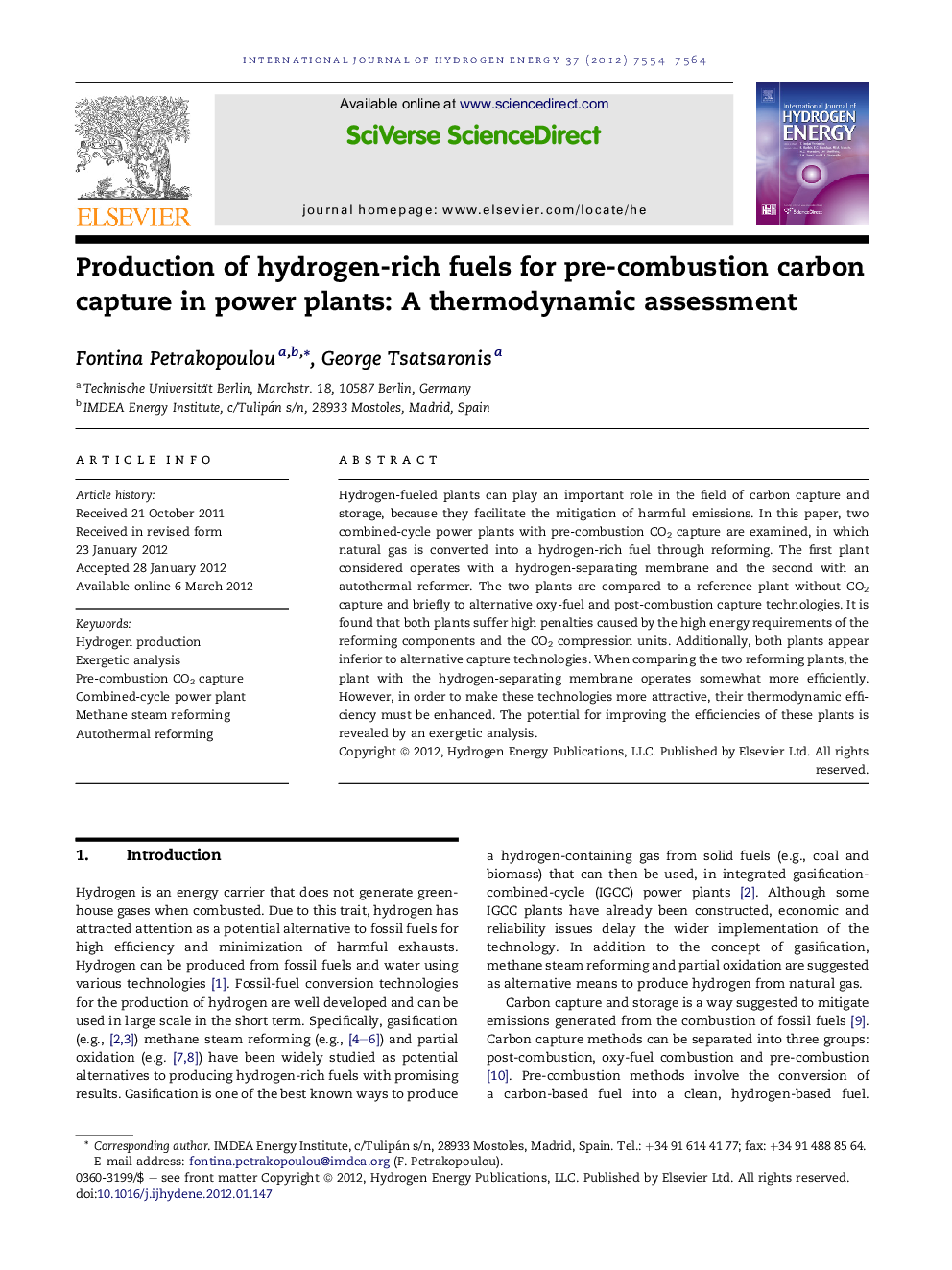| Article ID | Journal | Published Year | Pages | File Type |
|---|---|---|---|---|
| 1278558 | International Journal of Hydrogen Energy | 2012 | 11 Pages |
Hydrogen-fueled plants can play an important role in the field of carbon capture and storage, because they facilitate the mitigation of harmful emissions. In this paper, two combined-cycle power plants with pre-combustion CO2 capture are examined, in which natural gas is converted into a hydrogen-rich fuel through reforming. The first plant considered operates with a hydrogen-separating membrane and the second with an autothermal reformer. The two plants are compared to a reference plant without CO2 capture and briefly to alternative oxy-fuel and post-combustion capture technologies. It is found that both plants suffer high penalties caused by the high energy requirements of the reforming components and the CO2 compression units. Additionally, both plants appear inferior to alternative capture technologies. When comparing the two reforming plants, the plant with the hydrogen-separating membrane operates somewhat more efficiently. However, in order to make these technologies more attractive, their thermodynamic efficiency must be enhanced. The potential for improving the efficiencies of these plants is revealed by an exergetic analysis.
► Two pre-combustion carbon capture plants are simulated based on a reference plant. ► We reveal the sources of thermodynamic inefficiencies and improvement options of the plants. ► The two technologies have low efficiencies compared to other capture alternatives. ► The plant based on methane-steam-reforming performs better than the one based on autothermal reforming.
